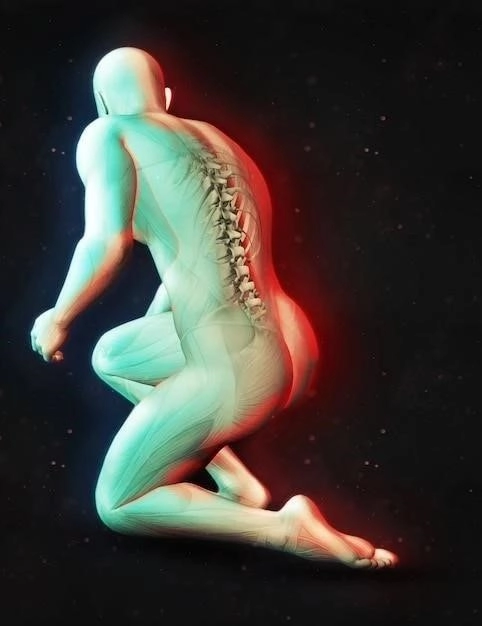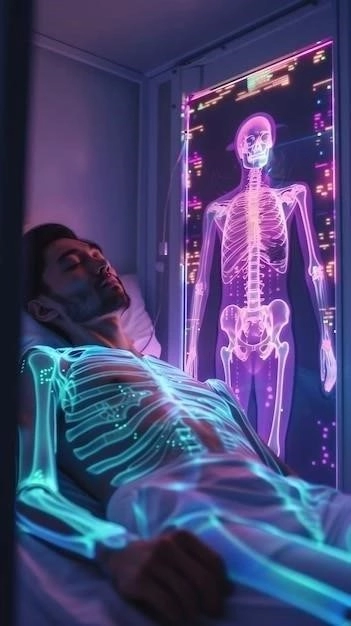Pain, an inevitable facet of the human experience, serves as a critical protective mechanism, alerting us to potential harm and prompting us to address it. This intricate system, often perceived as a mere nuisance, is a testament to the remarkable complexity of our nervous system, involving a cascade of events from the point of injury to the conscious perception of pain.

Nociception: The Genesis of Pain
The journey of pain begins with nociception, the process by which our bodies detect noxious stimuli. Specialized sensory receptors, known as nociceptors, are strategically positioned throughout our tissues, lying dormant until activated by potentially harmful stimuli such as:
- Mechanical: Intense pressure, cuts, or crushing injuries
- Thermal: Extreme heat or cold
- Chemical: Irritants, toxins, or inflammatory mediators released during tissue damage
Upon activation, nociceptors convert these stimuli into electrical signals, initiating a chain reaction that transmits the pain message to the brain.
Pain Pathways: A Relay to the Brain
The pain signals, originating from nociceptors, embark on a complex journey through the nervous system, traversing a network of nerve fibers that carry the message to the brain for interpretation and response. This intricate pathway can be broken down into three main stages:
- Transmission: The initial pain signal travels from the nociceptor along a peripheral nerve fiber to the spinal cord. Two primary types of nerve fibers are involved in pain transmission:
- A-delta fibers: Myelinated and fast-conducting, these fibers transmit sharp, well-localized pain, like the prick of a needle.
- C fibers: Unmyelinated and slower-conducting, these fibers carry dull, aching, and poorly localized pain, often associated with chronic pain conditions.
- Spinal Cord Processing: Upon reaching the spinal cord, the pain signal synapses with other neurons in the dorsal horn. This region acts as a gatekeeper, modulating the pain signal before it ascends to the brain. The intensity and quality of pain can be influenced at this stage through complex interactions between neurons, including the release of neurotransmitters like glutamate and substance P.
- Brain Processing: From the spinal cord, the pain signal travels upward through various pathways to multiple brain regions, including:
- Thalamus: This relay station directs the signal to different areas of the cortex for further processing.
- Somatosensory Cortex: Responsible for interpreting sensory information, this area helps determine the location, intensity, and quality of pain.
- Limbic System: Involved in emotional processing, this system contributes to the affective component of pain, such as the unpleasantness and suffering associated with it.
- Prefrontal Cortex: This area plays a role in higher-level cognitive functions, influencing how we perceive, interpret, and react to pain.
The brain, upon receiving and interpreting the pain signals, initiates a response, which may involve motor reflexes, emotional reactions, and behavioral changes aimed at minimizing or avoiding further injury.

Types of Pain: Acute vs. Chronic
Pain can be broadly classified into two main categories based on its duration and underlying cause:
Acute Pain
Acute pain is a normal physiological response to injury or illness, serving as a protective mechanism that alerts us to potential harm. This type of pain is typically short-lived, lasting for a few days to a few weeks, and resolves once the underlying cause heals. Examples of acute pain include:
- Postoperative pain
- Fractures
- Burns
- Infections
Chronic Pain
Chronic pain, in contrast to acute pain, persists beyond the expected healing time, lasting for three months or longer. It often arises from an underlying medical condition, such as arthritis, nerve damage, or cancer. However, in some cases, the exact cause of chronic pain remains elusive. This persistent pain can significantly impact an individuals quality of life, affecting their physical function, emotional well-being, and social interactions. Examples of chronic pain conditions include:
- Arthritis
- Neuropathic pain (nerve damage)
- Back pain
- Headaches
- Fibromyalgia
Factors Influencing Pain Perception
Pain is a subjective experience, and its perception can vary widely among individuals. This variability is attributed to a multitude of factors that influence how pain signals are transmitted, processed, and interpreted by the brain. Some of the key factors that contribute to individual differences in pain perception include:
- Genetics: Genetic variations can influence pain sensitivity, with some individuals inheriting genes that make them more or less susceptible to pain.
- Psychological Factors: Our emotional state, beliefs, and expectations can significantly modulate pain perception. Stress, anxiety, and fear can amplify pain, while relaxation, positive emotions, and a sense of control can diminish it.
- Social Factors: Cultural norms, social support, and previous experiences with pain can all shape how we perceive and respond to pain. For instance, individuals from cultures that encourage stoicism may exhibit higher pain tolerance.
- Past Experiences: Prior experiences with pain, both positive and negative, can influence how we perceive future pain. For example, a history of poorly managed pain can lead to heightened sensitivity and fear of pain.
- Context: The situation in which pain occurs can also alter our perception. For instance, athletes injured during a game may perceive less pain due to the release of endorphins and the distraction of the competition.

Conclusion: A Symphony of Signals
Pain, far from being a simple sensation, is a complex interplay of biological, psychological, and social factors. Understanding the intricacies of this sophisticated alarm system, from the initial detection of noxious stimuli to the conscious experience of pain, is crucial for developing effective pain management strategies. As our knowledge of pain mechanisms continues to expand, we can strive to develop more targeted and personalized approaches to alleviate suffering and improve the quality of life for those living with pain.
Pain Modulation and Gate Control Theory
The experience of pain is not a linear process from sensation to perception. The nervous system possesses intricate mechanisms to modulate pain signals, amplifying or inhibiting them at various stages. One prominent model explaining pain modulation is the Gate Control Theory, proposed by Melzack and Wall in 1965. This theory posits that a “gate” exists within the spinal cord, regulating the flow of pain signals to the brain.
According to this theory:
- Activity in large-diameter, non-nociceptive fibers (A-beta fibers), responsible for touch, pressure, and vibration, can close the gate, thereby reducing the transmission of pain signals.
- Conversely, activity in small-diameter, nociceptive fibers (A-delta and C fibers) tends to open the gate, allowing pain signals to ascend to the brain.
- Descending pathways from the brain, influenced by factors like emotions, thoughts, and expectations, can also modulate the gate, either enhancing or inhibiting pain perception.
Chronic Pain: Beyond Tissue Damage
While acute pain serves a protective function, chronic pain represents a malfunctioning of the pain system. In chronic pain states, pain signals persist long after the initial injury has healed. This persistence can be attributed to several factors:
- Peripheral Sensitization: Following injury, nociceptors can become sensitized, exhibiting a lower threshold for activation and firing more frequently in response to stimuli. This increased excitability amplifies pain signals, even with minor stimulation.
- Central Sensitization: Prolonged nociceptive input can lead to changes in the spinal cord and brain, increasing the responsiveness of neurons involved in pain processing. As a result, the nervous system becomes more sensitive to pain signals, even from non-injured areas (a phenomenon known as referred pain).
- Neuroinflammation: Tissue injury and nerve damage can trigger the release of inflammatory mediators, which contribute to both peripheral and central sensitization. These inflammatory processes play a significant role in the development and maintenance of chronic pain.
- Neuroplasticity: The nervous system is remarkably adaptable, and in chronic pain states, maladaptive plasticity can occur. This can involve structural and functional changes in pain pathways, leading to a persistent state of heightened pain sensitivity.
Managing Pain: A Multimodal Approach
Effective pain management requires a comprehensive approach that addresses the biological, psychological, and social dimensions of pain. Treatment strategies often involve a combination of interventions tailored to the individuals needs and the specific type of pain they experience.
Some common pain management modalities include:
- Pharmacological Treatments: Medications, such as analgesics (painkillers), anti-inflammatories, and antidepressants, can target different points along the pain pathway, reducing inflammation, blocking nerve transmission, or altering pain perception.
- Physical Therapy: Exercise, stretching, and manual therapy techniques can help improve mobility, reduce muscle tension, and strengthen the body, ultimately decreasing pain and improving function.
- Psychological Therapies: Cognitive-behavioral therapy (CBT), mindfulness-based stress reduction (MBSR), and other psychological approaches can equip individuals with coping skills to manage pain, reduce stress and anxiety, and improve quality of life.
- Interventional Procedures: In some cases, procedures like nerve blocks, spinal cord stimulation, or surgery may be necessary to interrupt pain signals or address the underlying cause of pain.
- Complementary and Alternative Medicine (CAM): Acupuncture, massage, yoga, and other CAM therapies can provide adjunctive pain relief and improve overall well-being.
By adopting a holistic perspective and tailoring treatment plans to individual needs, healthcare providers can help individuals navigate the complexities of pain and improve their quality of life.
Contemporary pain research continues to unravel the complexities of this ubiquitous yet enigmatic experience, pushing the boundaries of our understanding and paving the way for innovative therapeutic interventions. Here we delve into some advanced concepts that are shaping the future of pain management:
1. Genetics and Genomics of Pain
The field of pain genetics explores how individual genetic variations contribute to differences in pain perception, susceptibility to chronic pain conditions, and responses to analgesic treatments. Identifying specific genes and gene networks involved in pain processing holds immense potential for personalized medicine, enabling the development of targeted therapies tailored to an individuals genetic makeup.
- Genome-Wide Association Studies (GWAS): These large-scale studies have identified numerous genetic loci associated with various pain conditions, providing valuable insights into the genetic architecture of pain susceptibility.
- Pharmacogenomics: This emerging field investigates how genetic variations influence individual responses to pain medications. This knowledge can optimize drug selection and dosage, minimizing side effects and maximizing efficacy.
- Gene Therapy: As our understanding of pain genetics deepens, gene therapy holds promise for correcting or silencing genes implicated in pain signaling pathways, offering potentially transformative treatments for chronic pain.
2. Neuroimaging: Visualizing the Pain Experience
Neuroimaging techniques, such as functional magnetic resonance imaging (fMRI), positron emission tomography (PET), and electroencephalography (EEG), allow researchers to visualize brain activity associated with pain perception, processing, and modulation. These tools are instrumental in:
- Mapping Pain Networks: Neuroimaging studies have elucidated the complex brain circuitry involved in pain, revealing the interplay of sensory, emotional, and cognitive regions in shaping the pain experience.
- Objective Pain Assessment: Neuroimaging biomarkers hold promise for developing objective measures of pain, overcoming the limitations of subjective pain scales and improving diagnosis and treatment monitoring.
- Evaluating Treatment Efficacy: Neuroimaging can assess the impact of pain interventions on brain activity, providing valuable insights into treatment mechanisms and guiding the development of more effective therapies.
3. The Microbiome-Gut-Brain Axis in Pain
Emerging evidence suggests a bidirectional communication pathway between the gut microbiome, the nervous system, and the brain, known as the microbiome-gut-brain axis. This intricate network influences various physiological processes, including pain perception and modulation. Key findings indicate that:
- Gut Dysbiosis and Pain: Alterations in the composition and function of the gut microbiota (dysbiosis) have been linked to increased pain sensitivity and the development of chronic pain conditions.
- Microbial Metabolites: Gut bacteria produce various metabolites that can influence pain signaling pathways, either directly or indirectly; For instance, short-chain fatty acids, produced by beneficial gut bacteria, have been shown to exert analgesic effects.
- Therapeutic Potential: Modulating the gut microbiome through dietary interventions, prebiotics, probiotics, or fecal microbiota transplantation holds promise for managing pain and improving overall health.
Pain research is at an exciting crossroads, with rapid advancements in genetics, neuroimaging, and microbiome research converging to transform our understanding of pain mechanisms. This newfound knowledge is paving the way for precision pain medicine, where treatments are tailored to individual needs, genetic predispositions, and underlying pathophysiology. As we continue to unravel the complexities of pain, we move closer to a future where pain management is more effective, personalized, and readily accessible, improving the lives of millions worldwide.










